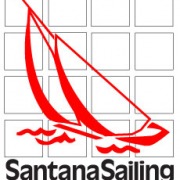Sizing Up a New Anchorage
Hi Sailors,
EXPLORING is our theme, and one of the essential skills for exploring new areas is figuring out how to anchor for the night in the cove you want. We had to figure out a few new anchorages on our November Sea of Cortez trip, and I was so glad that I knew without a doubt, just what I needed to do.
Puerto Los Gatos
At the end of our third day of sailing on the Sea of Cortez, we found ourselves in a new cove, Puerto Los Gatos, enjoying a sundowner and reflecting on just how beautiful this isolated anchorage was. Of course, there was a catamaran anchored in the prime spot when we first arrived, and I didn’t think we had enough room to fit in.
By using the three S’s though, we were able to anchor securely and enjoy snorkeling that afternoon, exploring ashore, and dinner under the stars. I thought, there are probably a lot of sailors out there who would really love to understand and own this process of sizing up a new anchorage so they could do this same sort of thing – here on the Sea of Cortez, the Caribbean, or anywhere in the world. Here’s what we did.
Survey
The first S is to Survey the anchorage. You’ve read the guidebook and have a good sense of where the hazards lie, but you have to see how that other boat is anchored, and exactly where the rocks and the shallows are. This is a motor through the cove with your eyes on the depth sounder and open for changes in the water color. A person on deck spotting for you may be necessary.
We found three crucial bits of information on our survey that made the difference. First, the open area to the south was no good because the wind waves were marching right in and crashing on the beach. It would be far too rough in that spot. Second, between the catamaran and the beach it would be too shallow and there wasn’t enough room to swing. Third, we found a spot with 12 feet of depth ahead and to windward of the catamaran, and that could give us just the room we needed.
Scope
The second S is Scope, or the ratio of anchor rode length to effective water depth. I use 5:1 scope for moderate conditions, and so here is the question I had to answer: If I had 12 feet of depth, and added 5 more feet for the height of the bow roller, and had no more increase in the height of tide, how much anchor rode would I deploy? 12+5+0 = 17, and 17 x 5 = 85 feet of anchor rode. Ok, could we live in that spot, swinging with an 85 foot radius? The answer was yes.
Setting The Anchor
The real test comes when you consider the third S, Setting the anchor. After deploying the anchor in the desired spot, we backed down on it with 1700 RPM, and set it firmly. I got out my snorkeling gear and dove on the anchor just to be sure. It was buried in the sand.
Thought Starter
Here’s an island we’ll be visiting on our upcoming Grenadines trips – Petit St. Vincent. Imagine you are skipper for the day, leading the exercise to anchor nearby and dinghy in to the beach bar (there are no moorings here). You’ll have back up coaching from me and the first mate…
What concerns do you have based on this picture?
Where’s a likely spot to anchor, and how do you make the final decision?
What do you have to do, absolutely, positively, before you dinghy in to the beach bar?
Give your answer in the comments below!
Sizing up a new anchorage and setting the hook is just one of the practices you’ll work on mastering when you join us on our upcoming sail-training adventures – follow this link to learn more. It’s a week of sailing, learning to explore new cruising grounds, and working on the skills you want to master.
Coming up next with the GROW theme – heading out in a Small Craft Advisory.
See you on the water,
Marc Hughston
Santana Sailing






